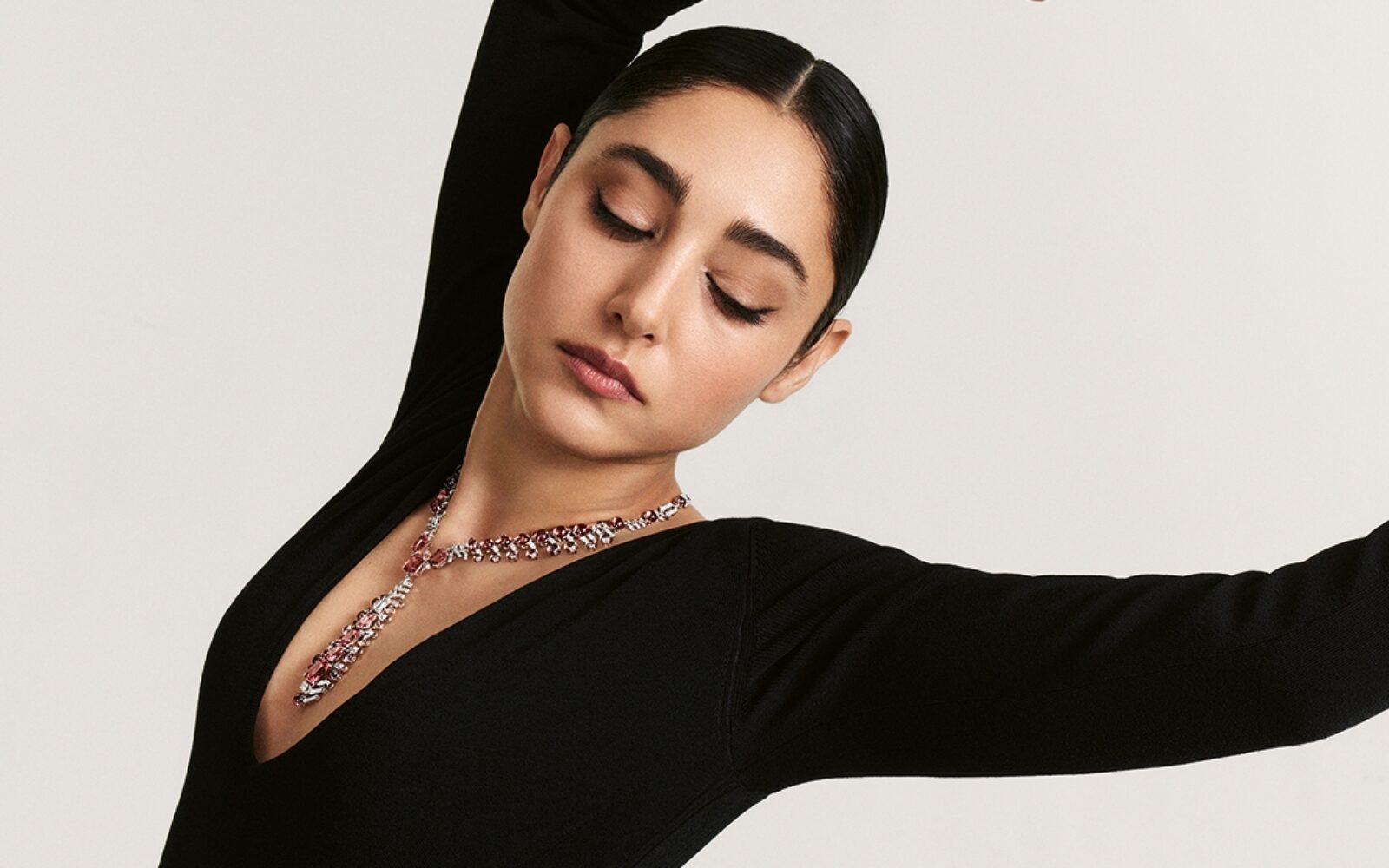MOJEH joins Pierre Rainero for a glimpse inside the remarkable world of Maison Cartier’s haute joaillerie creation process, where the stars align to create timeless, singular masterpieces, such as the Sixième Sens collection’s green goddess, Alaxoa
“No, we don’t invite anyone to those meetings,” laughs Pierre Rainero from a sunshiny Parisian office. “You’re not the first one to ask!” It’s late Friday afternoon in the French capital, and Cartier’s director of image, style and heritage is describing the magical moment when it all gets laid out on the table – quite literally. “The stones are very important, because they are the point of departure,” says Rainero. “You cannot conceive a unique piece without having the stones in your hand. First, we define a theme, an inspiration for the designers, then we go hunting. We go hunting stones!”
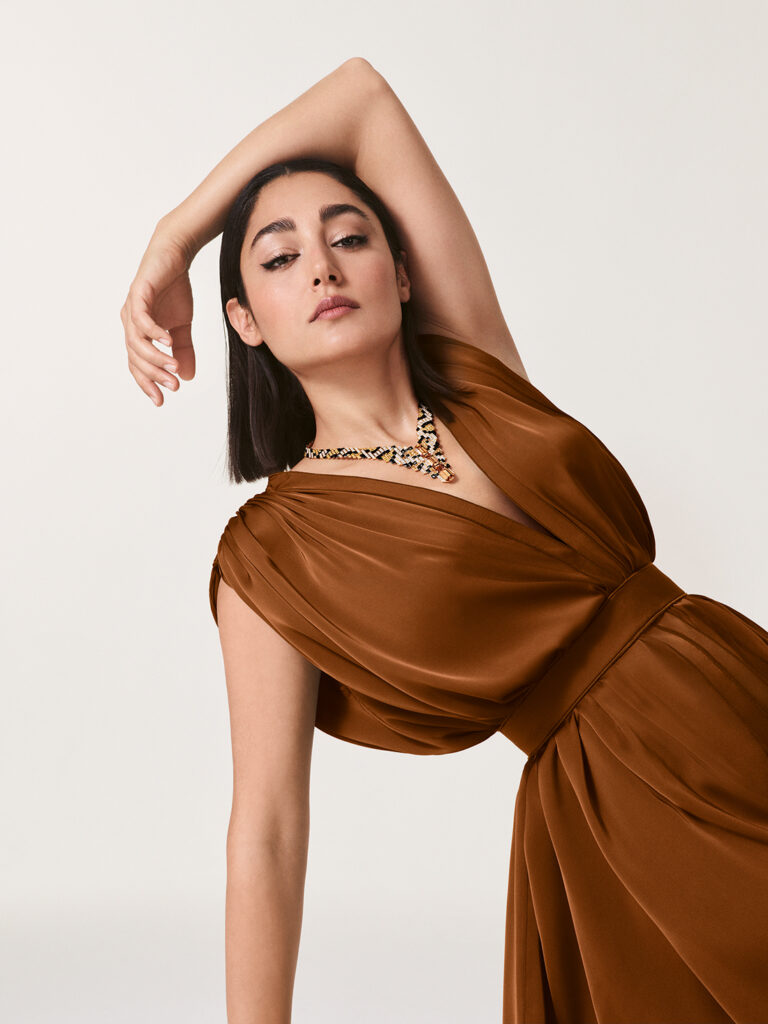
Stunning Iranian actress Golshifteh Farahani models the collection for Cartier
In the world of high jewellery, everything works on a different scale. The creations are all unique, one-of-a-kind; the price point is mind-boggling; and the dedication and seriousness to the design and production of these superlative pieces is nothing short of astonishing. Then there are the top-secret meetings that very few even know about. “Even after 30 years of working at Cartier, I still think those meetings are incredible,” says Rainero. “We meet with the studio and the stone buyers, and we put all the stones we have gathered – some before we even buy them – all different colours and cuts, on the table. And then we gather all around and it’s incredible. You have guards at the door, of course! It is completely confidential, and we don’t open that meeting to anybody.”
Well, bang goes our invitation. But this moment is an essential part of the creative process, the second step, after deciding a theme, on the long, winding road to jewelled perfection. “We finally decide if we will stick with that theme once we gather the certain quantity of stones necessary to have a collection,” says Rainero. “If we define the theme in May or June, we look for stones until September, and it’s only at that date we will be certain that we will go forward in a process that takes around two years in total. “So we have to be flexible. High jewellery is a very specific field, and everything is linked to the stones. And then you have a design process for six months. We have a review of the design every two weeks, and then again at the end to see how the theme is incorporated in all the different designs and how they will be presented.”
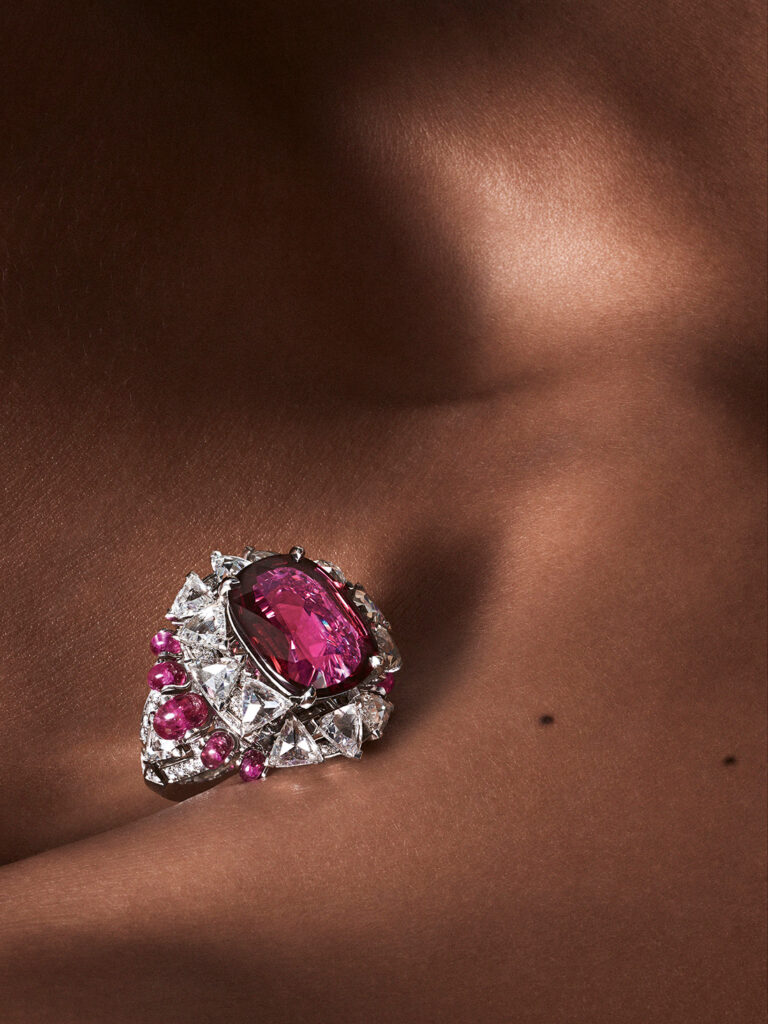
The Phaan Ring
When it came to conceptualising the Sixième Sens collection – Cartier’s last high-jewellery presentation, launched in June 2021 – the direction was very much within Cartier’s wheelhouse. “The global theme was to work on the kind of emotion that is linked to jewellery – the power of the expression of the stones, the power of design, the power of what we show figuratively, and the illusions that lure the eye,” says Rainero. “There is optic art and kinetic art, but with stones you go even further, because they transform the perception of surfaces with their glitter, their reflection. We wanted to play with all of those different directions to give emphasis to the very specific emotion that high jewellery gives birth to. “When you design a piece of jewellery, you always have to think that there’s a kind of self-expression of the person who will wear it. It’s not a choice that’s totally neutral. When a lady wears a piece of jewellery, there’s a special link, and among all of the artistic expressions, jewellery is unique in that. The difference between jewellery and fashion, which also expresses the individual, is that jewellery is meant to remain. And to be ‘you’, even for your descendants. It has the idea of transmission. It’s a much deeper kind of ‘you’ than any other item. These are all components of a specific type of emotion that jewellery provokes.”
The point of the Sixième Sens collection is to express the transcendent power of jewellery, and how it can bestow something approaching immortality to the wearer. And when it comes to the Alaxoa necklace, a vivid emerald demonstration of some of Cartier’s most refined techniques, the emotions come thick and fast. Named for the Nahuatl word meaning ‘to polish’ or ‘caress’, Alaxoa is a tactile combination of faceted, cabochon and beaded emeralds, splaying from a diamond curve. Made using Cartier’s heritage threading technique, Alaxoa walks the line between freedom and constraint to control its form. “When you use threading, the idea is to maintain the original design,” says Rainero. “When a piece is worn, there is natural gravity and movement. So there is a balance to find between form and the necessary fluidity, the comfort of the piece. There are also parts that maintain the structure – invisible, creating the illusion that everything is free in the construction, when of course it isn’t. “It started with the emeralds – the availability of the emeralds gave both the idea of the design and the technique. We have the tradition of using briolette-cut diamonds, which traditionally are on threads – they are drilled in the centre, you put a thread through them and you play with them that way. They are faceted all around, and they are the best stone to put on threads, together with beads – another part of our vocabulary. The stones are completely essential to these pieces.”
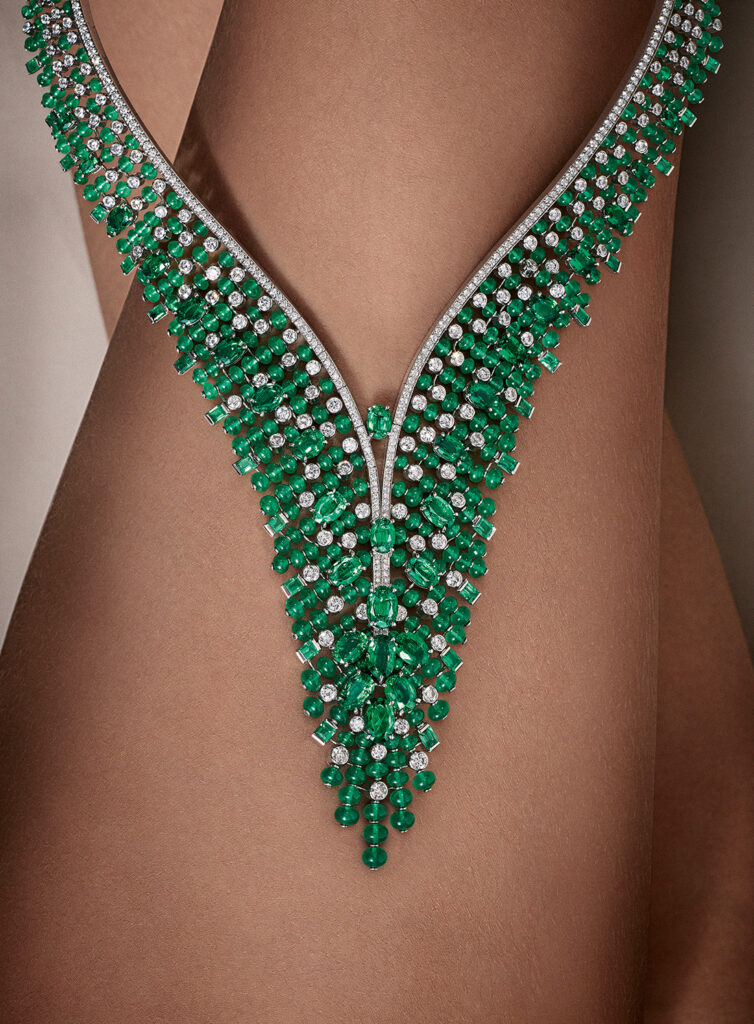
The Alaxoa necklace
And it’s the depth and breadth of ideas which really sets Cartier apart – as the design process intensifies, pieces are grouped together, and the entire collection begins to make sense. “The best compliment is when someone can look at the pieces and say, ‘That’s Cartier,’” says Rainero. “What’s most important for us is to cultivate our own style. Every new collection or creation is a challenge, because of course you have expectations, but you don’t know what the results will be. That’s the rules of the game when you’re in a creative field.”
Creation at Cartier is the result of a collective work, with 11 or 12 designers involved in the Sixième Sens collection, and the strength of each creation is at the centre of that. “It’s very interesting, because of course there is the common preoccupation of cultivating the Cartier style, and projecting it into the present and the future. But at the same time, every designer is an individual, and with his or her own idea of what Cartier is. So it’s a source of richness. It’s a broad array of possibilities, thanks to that community of different talents we put together. And we have to acknowledge that every creation is the result of human input, and the way a person looks at things.” But the sky isn’t the limit. Haute joaillerie may be out of reach of mere mortals, but there are still constraints that even the mighty Cartier must abide by. “We are in the field of creation, but at the same time the designers should have an idea of the price of those stones,” says Rainero. “We always work with an idea of the final price of the piece, so when choosing the stones, they have to integrate the direction the design will go in with the price, and decide if will be feasible or not. It’s in their own interest, because if we go into a sophisticated design, and then we abandon the idea because we went too far in accumulating stones, then there’s no point.”
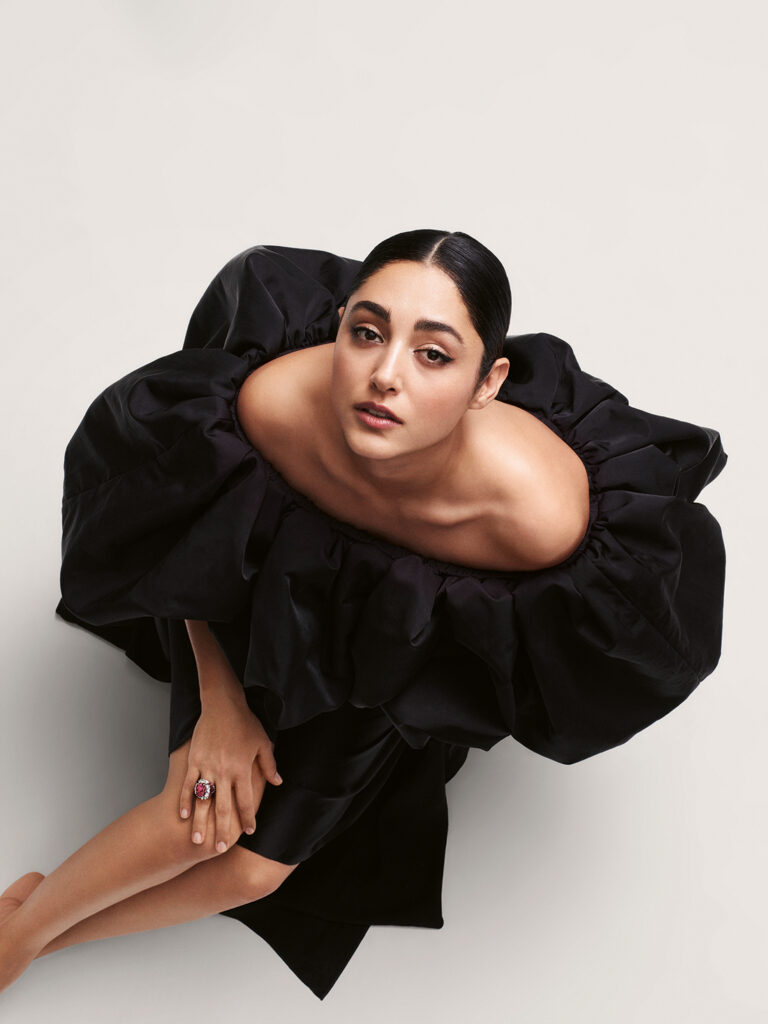
The beauty of Cartier as a maison is in its recognisability and immortality. From the time that Marilyn Monroe whispered the brand’s name in the movie Diamonds Are a Girl’s Best Friend until now, it remains a stalwart and enigmatic figure in the jewellery world. So how does Rainero ensure that every creation is so unmistakably Cartier? “Cartier isn’t recognisable in our creations today just because you can find some kind of our aesthetic vocabulary – the use of beads, some associations of colour, the evocation of the panther, for instance…” says Rainero. “You have physical elements that link that new piece to our tradition in the aesthetics, the vocabulary, the language. But also you have a philosophy; you have values behind that style. “For instance, the idea and objective to play with light at its maximum. That’s why we use different cuts of diamonds in the same piece – to multiply the possibilities of playing with light. Fluidity is not only necessary for the comfort of a piece once it’s worn but because, again, it helps the piece to play with light at its maximum. Those are the principles, even the values, of our creation. Alaxoa corresponds to those values with its combination of craftsmanship and aesthetics.”
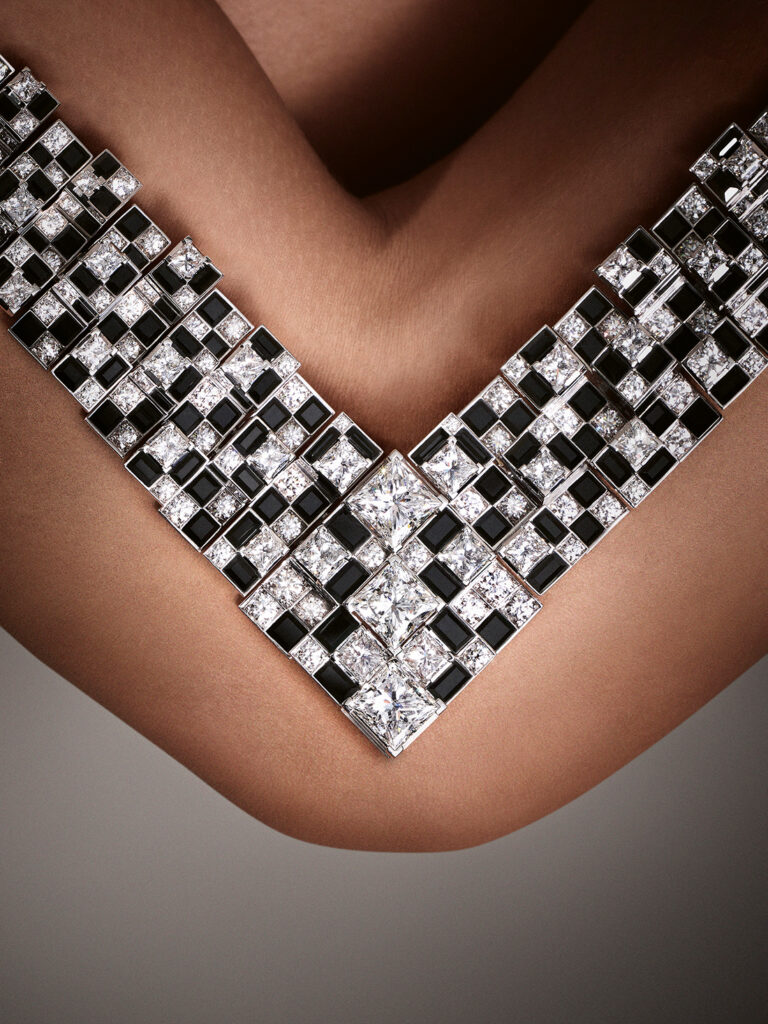
The Meride necklace
So with Sixième Sens providing an insight into Cartier’s deepest emotions and philosophies, it’s a collection of which Rainero is rightfully very proud. “When we first presented Sixième Sens in June, some people described it as ‘contemporary refinement’, and I love the combination of those two words,” he concludes. “Because sometimes refinement or sophistication is perceived as something old-fashioned. And in that case, it’s a compliment, because all the pieces look ‘now’. The designs couldn’t have been imagined before, only today. And you also have that notion of refinement in the making, in the design, and that’s the best compliment we could receive.” Explore the collection
Read Next: Bulgari’s Jannah High Jewellery Collection Was Inspired By The Grand Mosque
- Words by Rachel Silvestri

